A visit to any of California’s 21 restored Spanish Missions gives visitors a glimpse into the past that began much of the state’s history. We learned quite a bit about the missions last school year from my daughter’s California history lessons and visiting Mission Santa Barbara for her project. She’s inspired to visit as many as she can and next on our tour was Mission San Juan Capistrano. It is a historic landmark and museum located in Orange County between San Diego and Los Angeles.
This was the 7th established of the California missions by the Spanish missionaries to spread Christianity to the Native Americans. It was named after St.Giovanni da Capistrano, an Italian priest and crusader in the 15th century. This was the only mission that was founded twice – in 1775 by Father Lausen and again by Father Junipero Serra in 1776. It had to be abandoned when the Indians attacked the nearby San Diego mission.
It was called Jewel of the California Missions largely for its beauty and the extensive restorations it has undergone over the years. The mission, at 10 acres, was actually a lot bigger than it looked from the outside.
You can’t help but marvel at its Spanish architecture built with adobe mud bricks and fired clay tile rooftops. The arches and stone pathways and surrounding areas were made of stones, concrete and wood iron.
The main attraction of Mission San Juan Capistrano was the remnants of the Great Stone Church. Completed in the early 1800s, it was a parish to over 1,000 people. The church was 180 feet long by 40 feet wide, five stories high with a majestic dome and a tall bell tower. At one time, it was the largest stone structure in the west.
But, an earthquake destroyed the church in 1812 which also killed over 40 Indians. The church was never rebuilt and services moved to the chapel. The ruins seemed out of place in the middle of suburbia.
Some of the ceiling art was still visible. We could only imagine the splendor of this church that only stood for six years.
Adjacent to the church was a courtyard with a statue of Father Serra with a young Indian boy and a bell wall. The four bells were originally hung in the Great Stone Church’s bell tower and survived the earthquake.
We ventured inside the quadrangle which was typical of the missions and the hub of activities back then. What once was an area for weaving and sewing, the museum now occupies in the west wing. The various rooms showed how life was like in the 1700s for the priests.
It was an immersion in history and culture. This was a depiction of their rooms with rope beds. It looked very uncomfortable and too small for adults to sleep in. There were also various artifacts, documents, relics and paintings that survived for centuries.
The east wing had the Father Serra Chapel of 1777 which was the original mission chapel and believed to be the oldest church in California. It was remarkably well-preserved. The artwork on the walls and ceiling were beautiful. The chapel was filled with statues, artifacts and paintings. This was the only known building left where Father Serra said mass.
The stunning masterpiece behind the altar or retablo was the centerpiece of the chapel. It was made of cedar and covered with gold leaf and was carved by Spanish craftsman over 200 years ago. In order to accommodate the retablo, the chapel roofs were raised instead of cutting any part of this artwork. It was decorated with 52 angels – one for every Sunday of the year.
We saw many people go in and out of a special prayer room within the chapel dedicated to St Peregrine – patron saint of cancer sufferers.
One of the highlights for us was the gardens. Between the buildings were various well-maintained and lovely gardens to enjoy. They were filled with native plants and vibrant blooms. We were here during late spring so it was pleasant and relaxing to sit down and admire the explosion of colors around us. The delightful scents, mostly of lavender, filled the air.
There were two fountains filled with water lily blossoms. Huge Koi fish in various colors swam among the lily pads where kids can feed them for $1 a cup. Plenty of butterflies and hummingbirds that darted among the flowers kept the kids entertained. This was one of the prettiest gardens among the missions.
Mission San Juan Capistrano is also well-known for the cliff swallows that live here. Every year, the swallows leave in October to head south to Argentina for the winter and return every year around March 19.
Their timing is impeccable that a parade and festival happens every spring in the mission to welcome them back. They spend their summers nesting here. We only saw a couple during our visit and their mud nests tucked in the mission ceiling nooks.
Today, Mission San Juan Capistrano is an active parish and museum. It is also one of the area’s main tourist attractions and where many students go for field trips for their California mission history. The preserved historical structures and attractive, landscaped gardens create a wonderful experience and setting for all ages to visit. It was a fascinating place and we saw why it was rightly named the Jewel of the Missions.
Visiting Mission San Juan Capistrano Basics and Tips:
- Audio Tours. Audio Tour Guides are available and included with Admission. Kids get their own version of the audio guide. I actually liked their version better. Exhibits throughout the mission are numbered corresponding to the audio on a device. Available in 6 languages and kids are only in Enligsh and Spanish.
- Guided Tours. Daily and Weekend guided tours are available on a drop in basis. Tour times are 11:15AM, 1:00, 2:15, 3:30 PM. It is an additional cost of $3 adult/$2 per child. Docent guided tours are also available where the docents are dressed in historical outfits. Availability is limited and must be reserved in advance.
- Take the Train. The mission is within walking distance from the Amtrak and Metrolink stations for those who want to visit and avoid the weekend freeway traffic. The Pacific coastal views from the train are very scenic and well worth the ride.
- Mission Activities. Check their events calendar and website for plenty of activities (usually on weekends) to keep the kids occupied. How about some gold panning or adobe brick making?
*Have you explored Mission San Juan Capistrano or any of the other California Missions?
[stextbox id=”black” bgcolor=”b0c4de”] If you liked this post, please Subscribe to get the latest posts. Follow us on Twitter or Facebook. Thanks! [/stextbox]
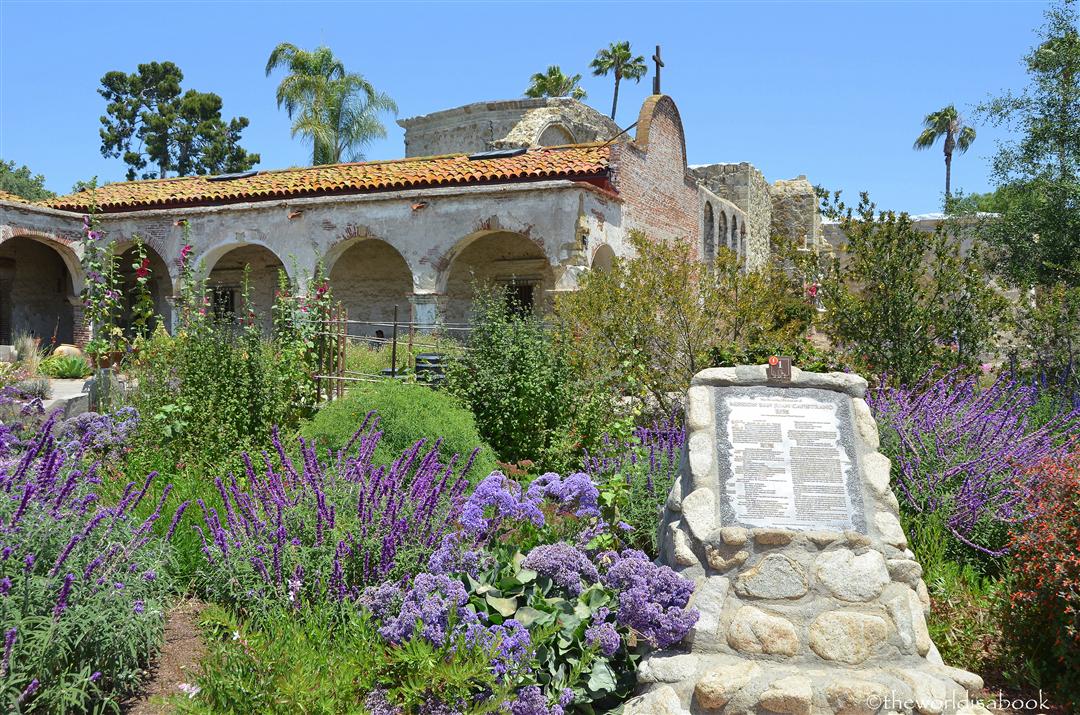
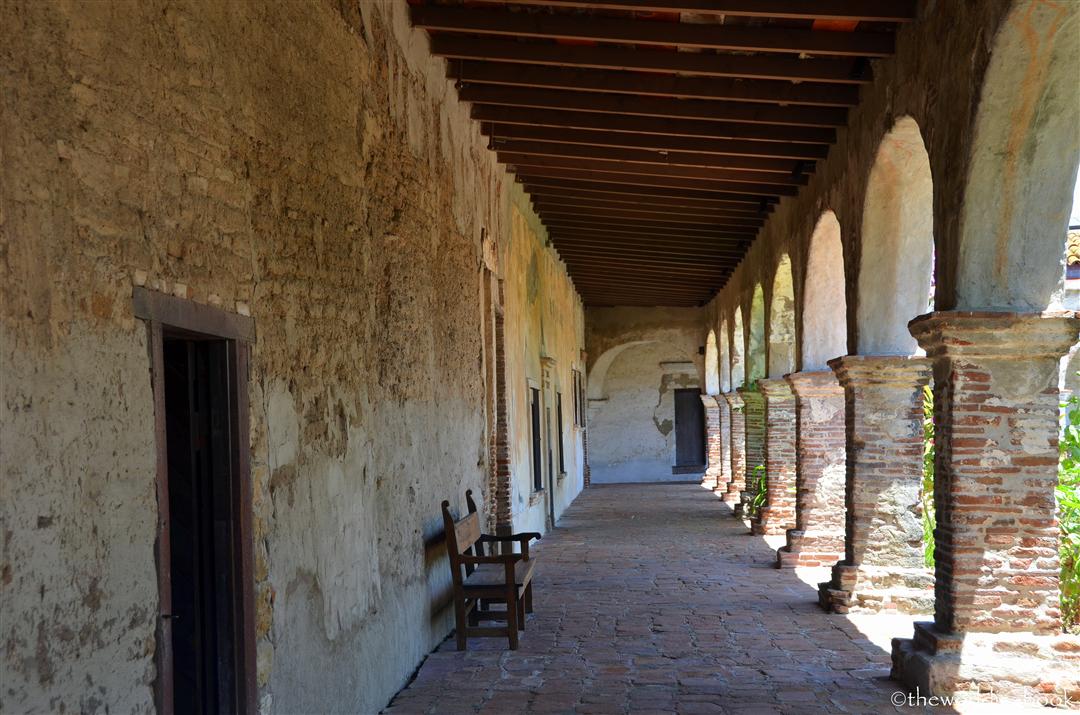
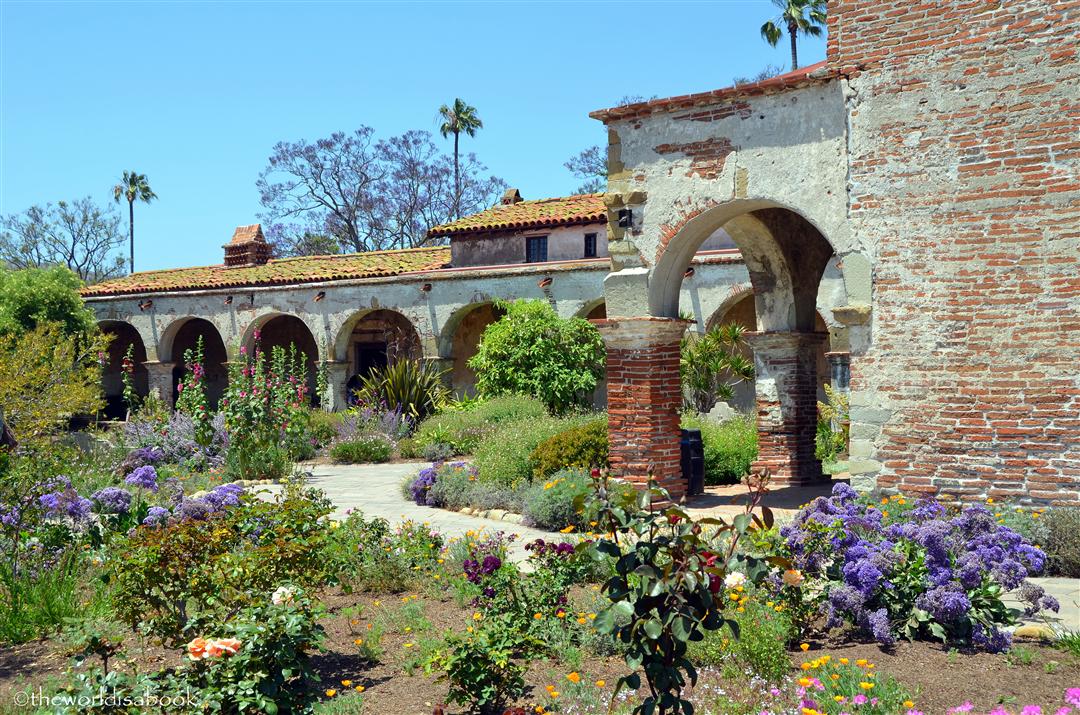
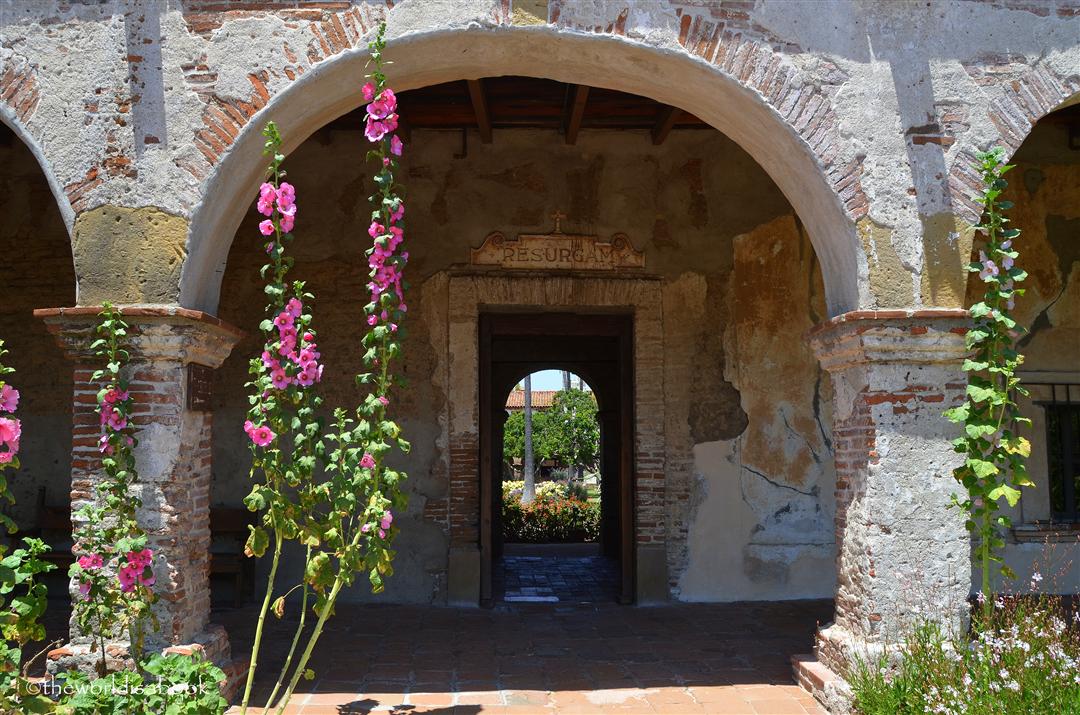
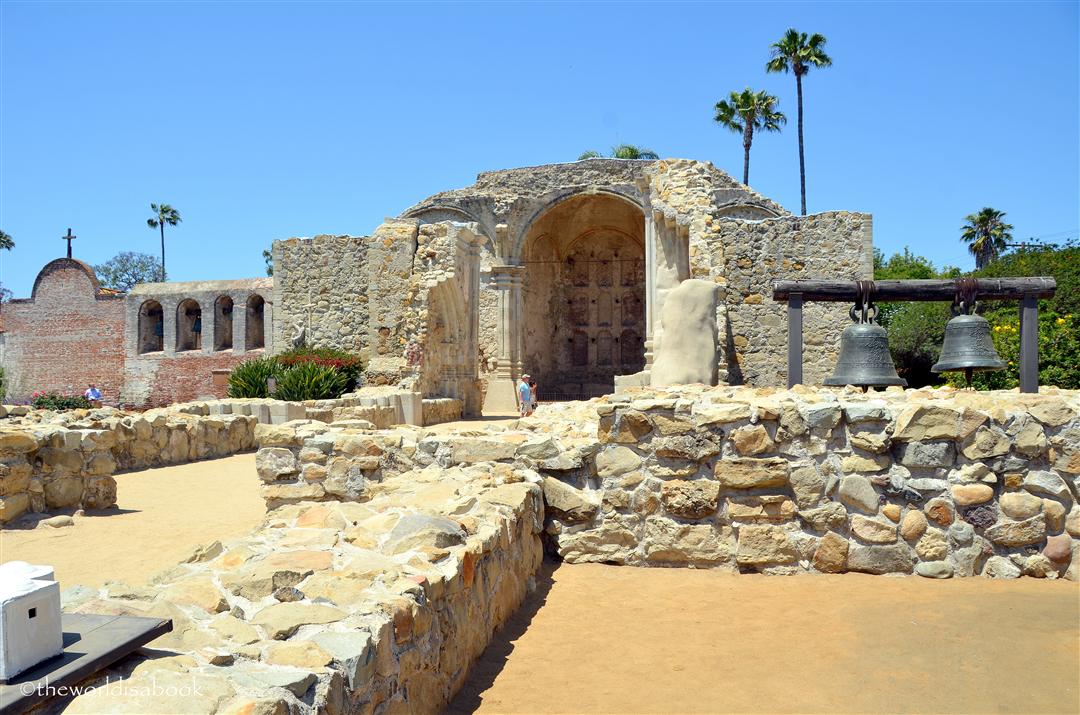
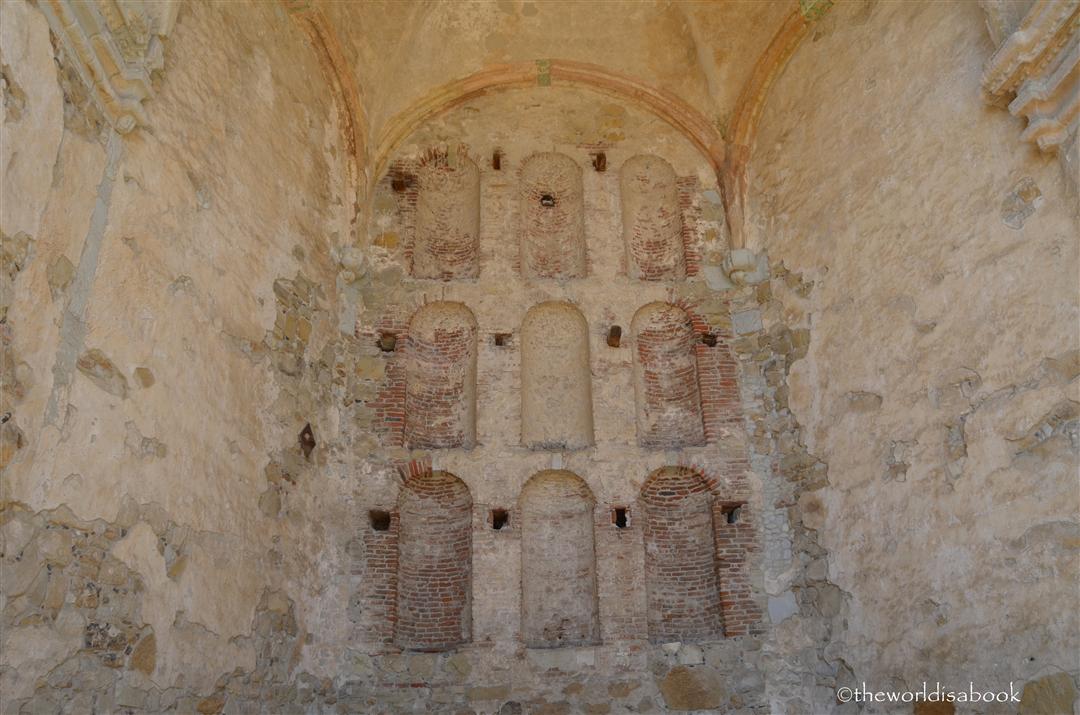
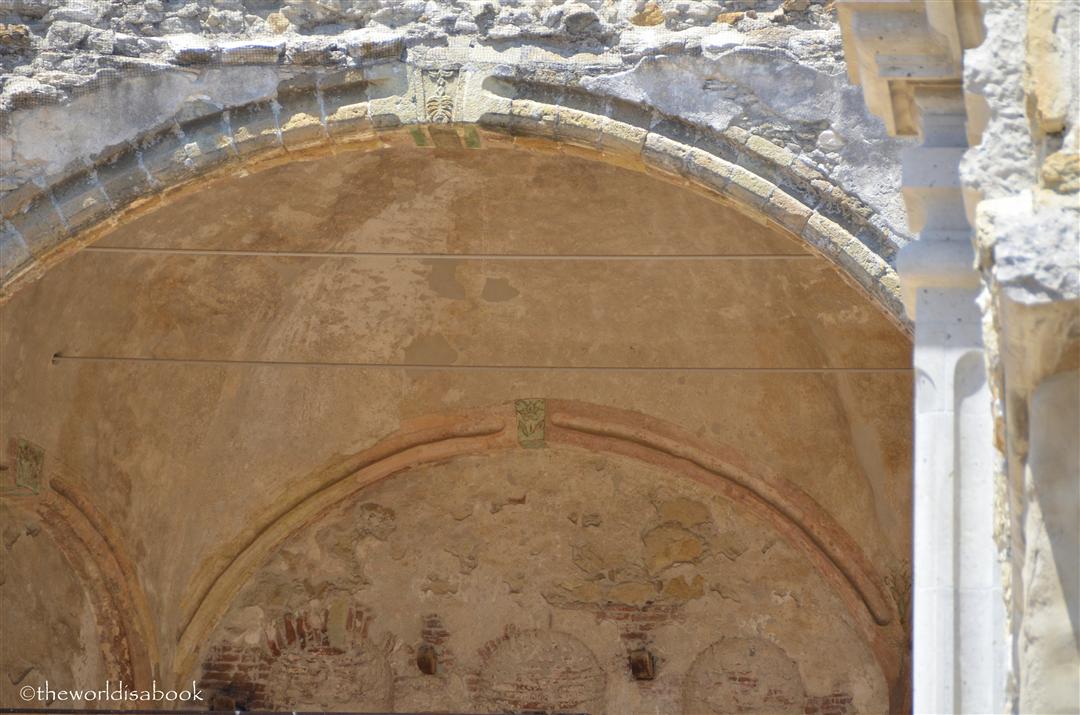
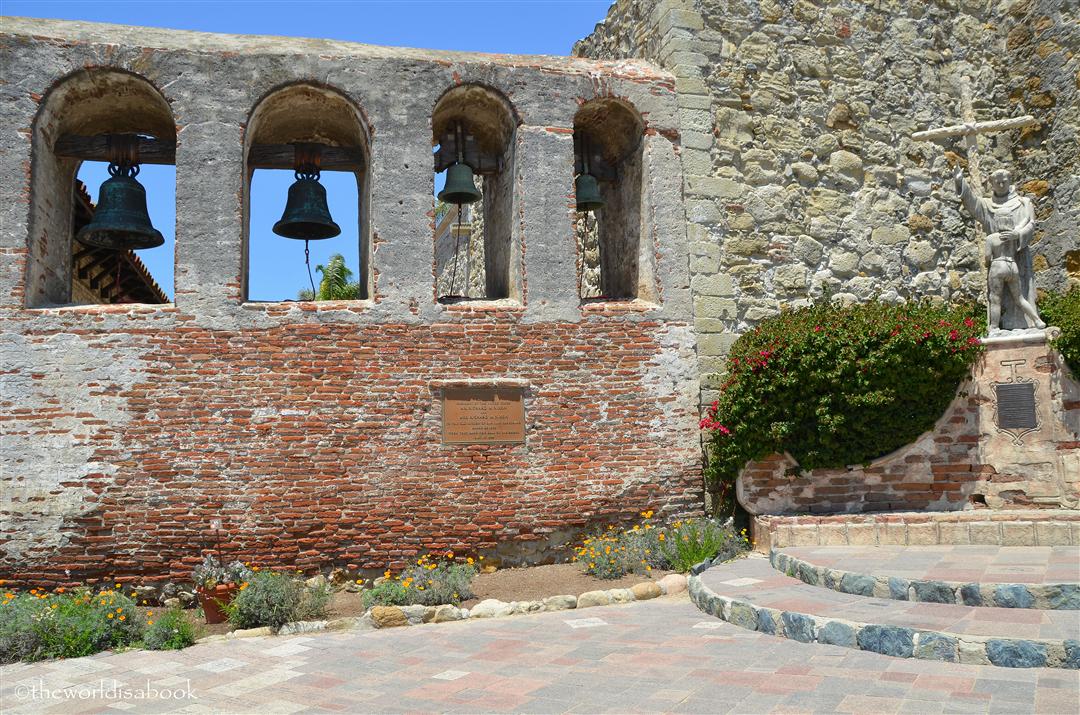
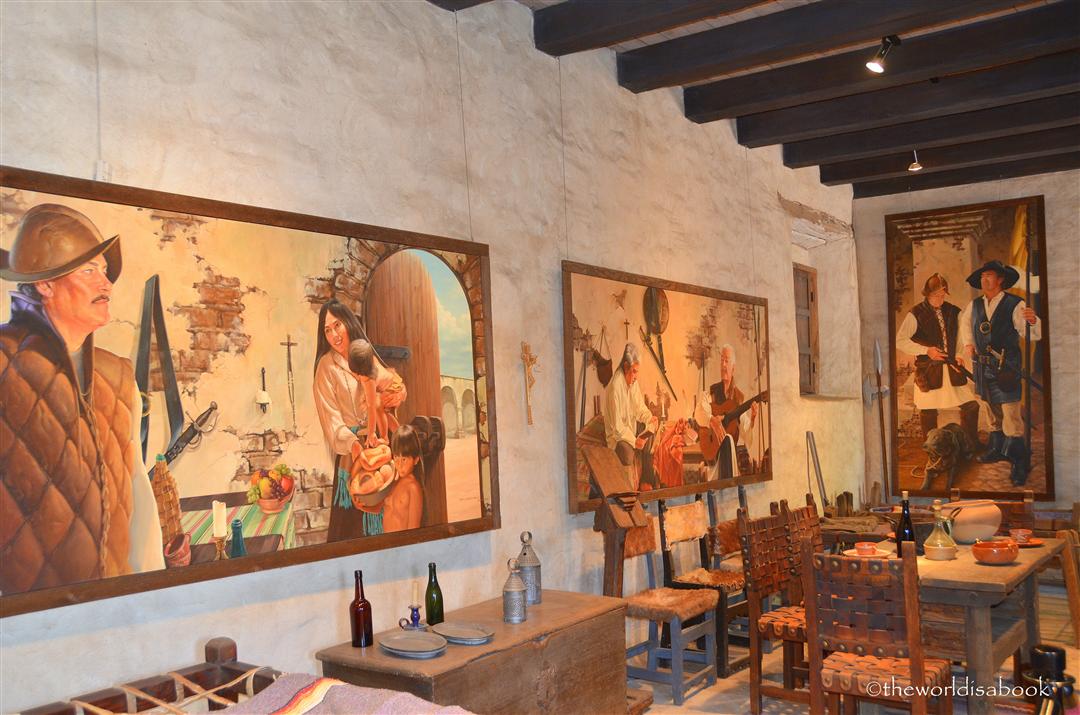
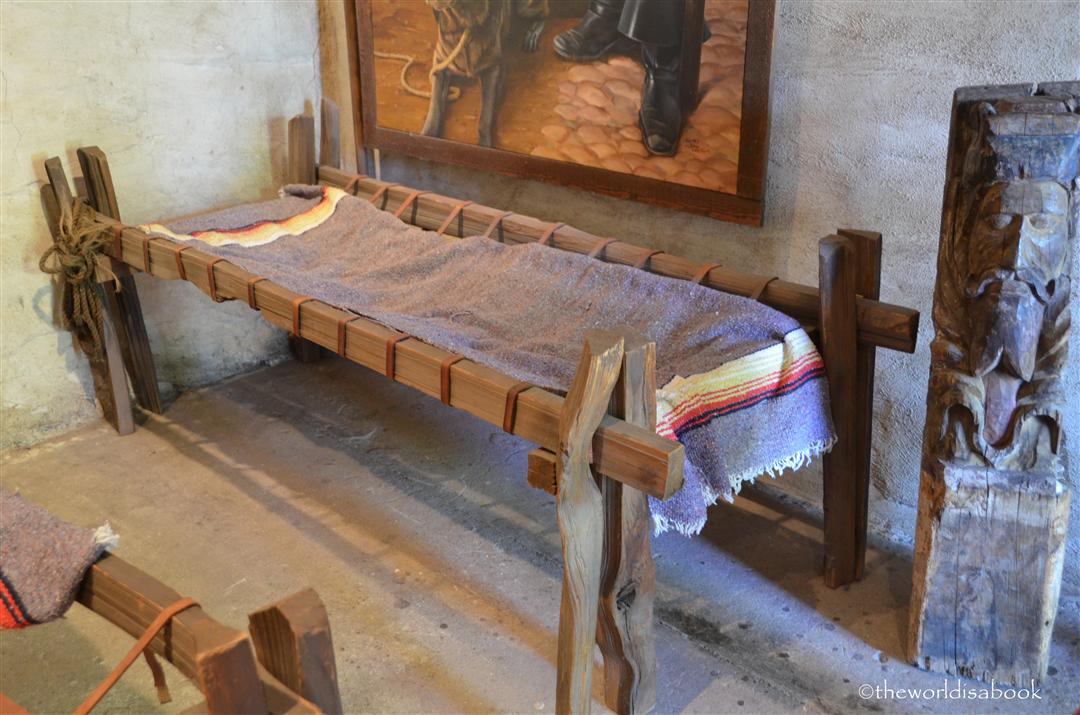
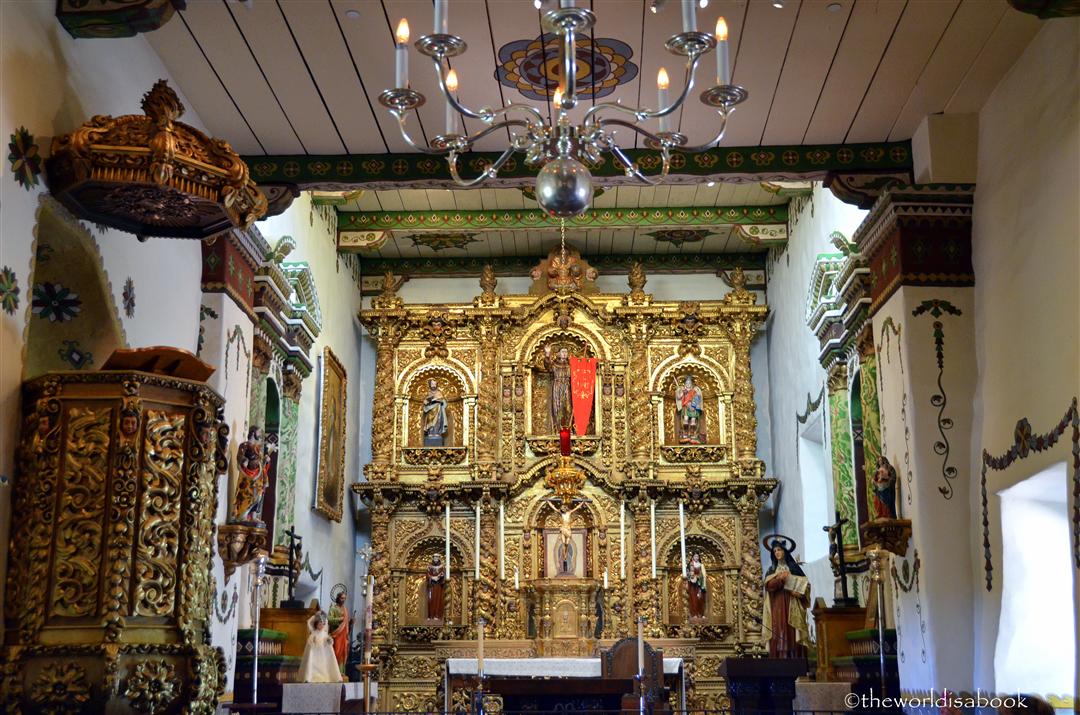
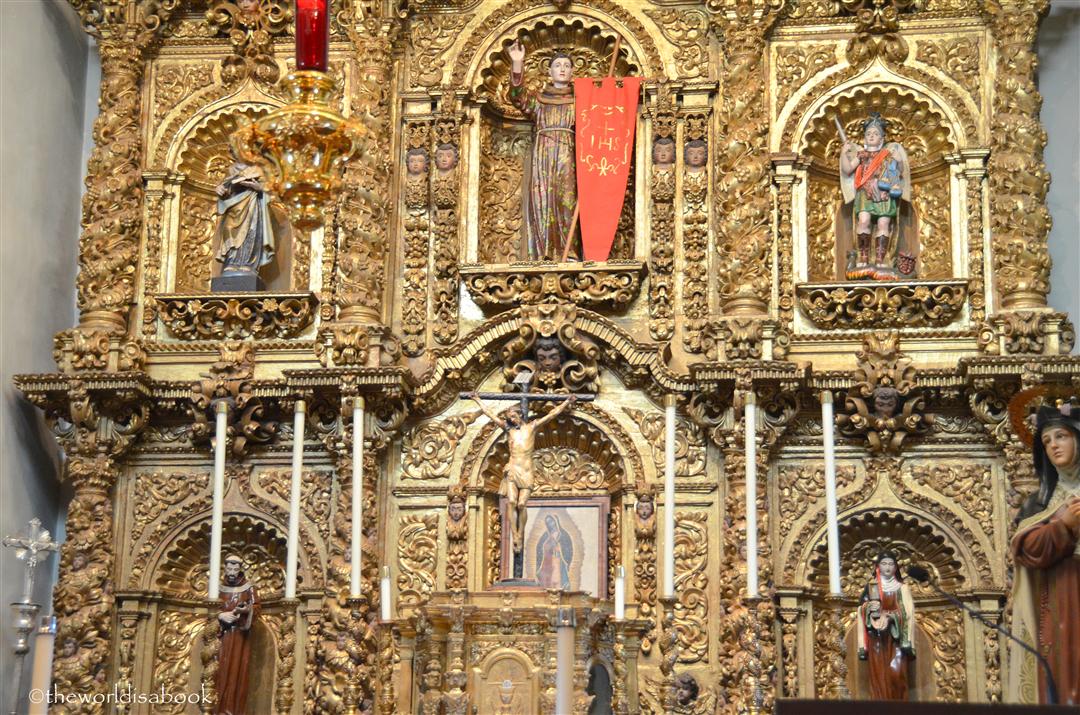
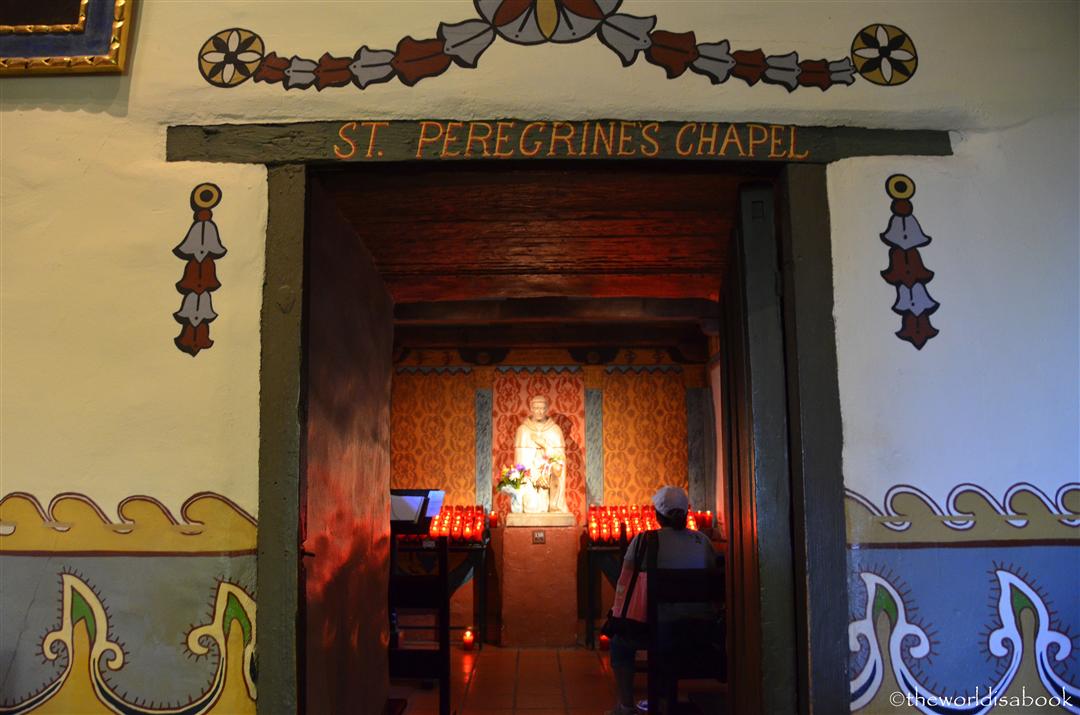
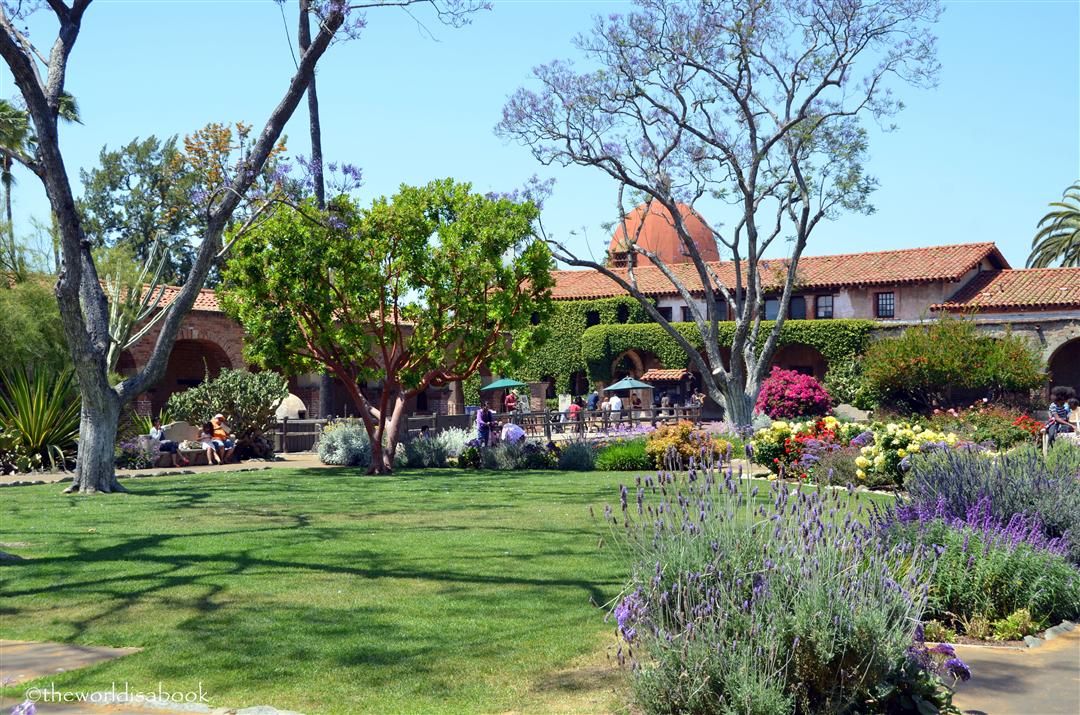
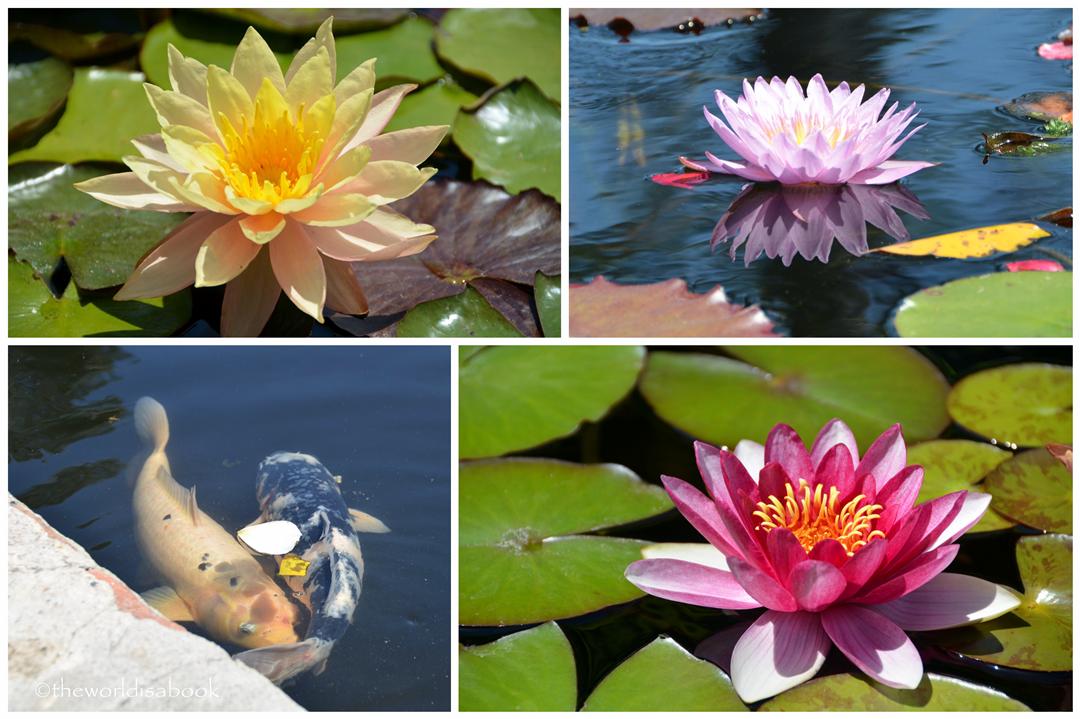
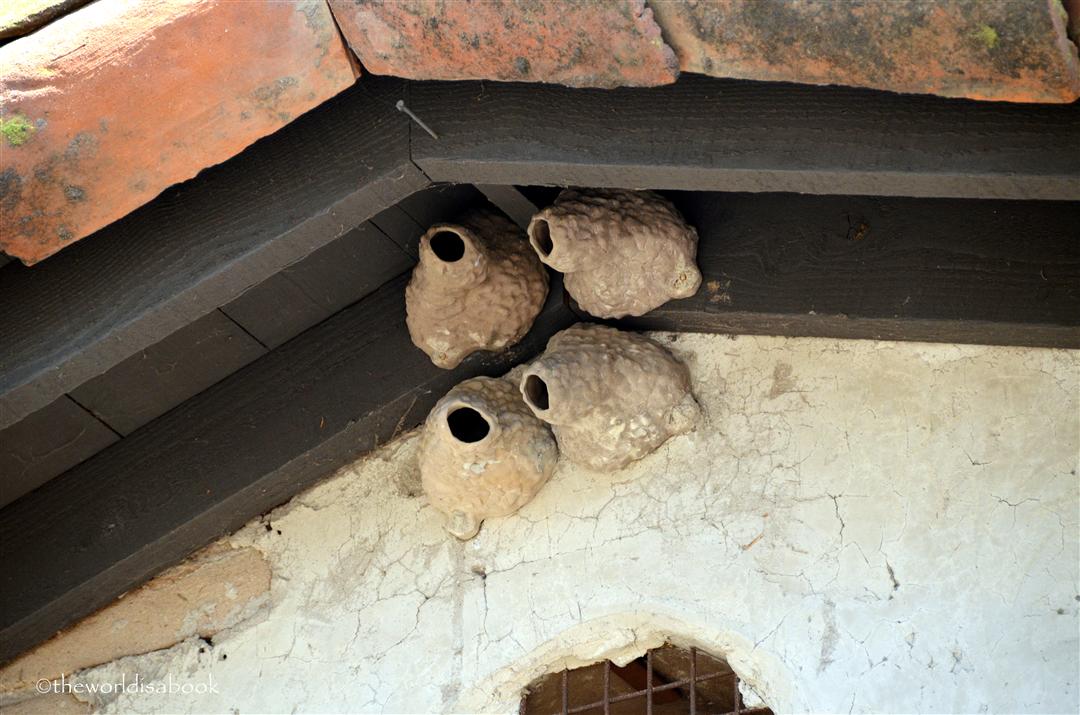
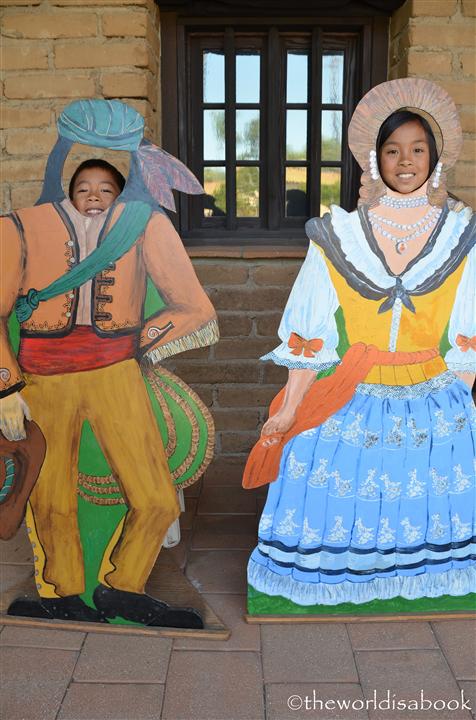
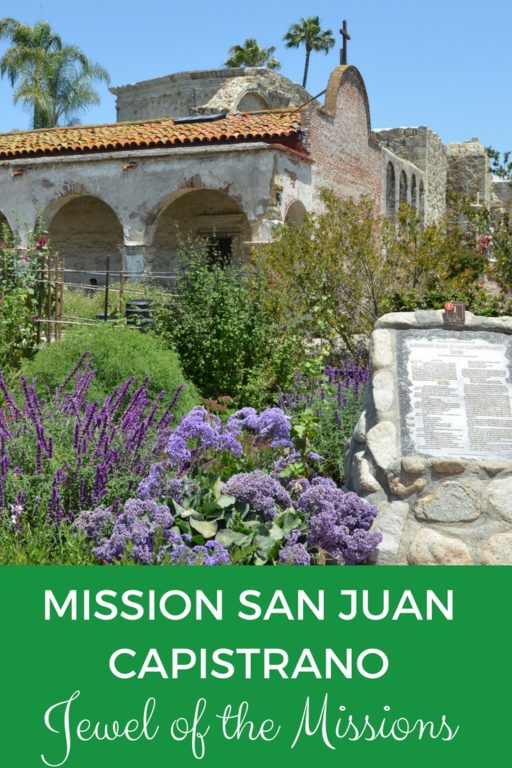
That is much larger than I expected a mission to be. Very interesting! And the gardens are beautiful. Love the flower shots. And the swallow’s nest :) It’s been forever since I’ve seen one in person!
Thanks Sabrina! It was too bad we didn’t get to see many more swallows. It was quite surprising to see the inside of the mission to be larger than it looked from the outside. We loved the gardens too.
What a great photo essay. We really must visit the Missions one of these days.
Thank you Jackie! The California Missions are a wonderful place to visit if not for their history then their architecture and beautiful grounds.
Love the texture of the walls on the old buildings. Water lillies are the same the
world over it seems. We have them in the Ross River where I live in Townsville,
Australia. Lovely photographs. Would have been a great day.
Thanks Jan! Water lilies are beautiful to photograph. It was great how well they preserved the architecture of the buildings.
I can see why this mission is called the Jewel of the Missions. It’s absolutely beautiful. You just imagine how it looked in its prime with the old church, the stonework, the arches and the magnificent gilt wall behind the altar.
This is one of our favorite missions. I know what you mean about imagining how magnificent the Great Stone Church must have looked. It was a bit sad it only lasted six years.
Beautiful! I would never guess it was in California.
Thanks Laurel! I’ve always felt that going to the missions is like going to Old World Spain.
I’m very impressed with this mission. I love the warmth in the colour of the buildings and in my mind you can never have too many gardens. It’s great that your daughter has embraced learning about California’s history and your son will already have his homework done by the time he has to study it.
What a contrast between rope beds and the ornate gold panels.
Thanks Leigh! The gardens are what made this mission stand out among the rest. My daughter loved the missions and my son has a couple more years and we’re hoping we don’t have to drive far for his project. My back was aching thinking how they slept on those beds.
I really don’t know much about the missions. This was a lovely tour. Your flower shots are awesome!
Thanks Nancie!
My family used to live near here when I was little, and my mom loved the swallows of Mission San Juan Capistrano. But I don’t remember any of it! I really need to tear myself away from Disneyland sometime and pay it a visit. It looks beautiful.
You and a whole lot of people who need to see the OC beyond Disneyland :) It is a beautiful mission and I hope your kids get to see the next time you’re in SoCal.
Wow, what a beautiful mission! It’d be great to visit and be there for the return of the swallows.
If I had history project like this, it probably wouldn’t take me to adulthood to have an appreciation of history.
Thanks Marcia! We’re hoping to make it to the return of the swallows festival next year and spot them. I know what you mean. I didn’t go to elelmentary school in California so I dodn’t really know more about the missions until my daughter’s project last year. Never too old to learn :)
Mission San Juan Capistrano is one of my favorites and I have visited it many times since I lived right down the road in Dana Point! Lovely mission and the surrounding area is a great place to spend a few days! Loved all your pictures. . . they brought me home :)
Thanks Debbie! I’m glad it brought you back. I didn’t know you were a formet OC resident. South Orange County is such a lovely area to explore.
I remember going here when I was about 6. I’d like to go back. From seeing this, it’s obvious, at that age, I didn’t appreciate what it had to offer!
My 6-year old son loved feeding the koi and looking for butterflies and hummingbirds and didn’t care much for the ruins. So, I know what you mean :) I hope you get to return and visit the mission as an adult for a totally different perspective.
I haven’t been to this mission yet, but can understand why it’s called the “jewel”. I’ve been to several other missions — all special in their own ways.It looks like the kids were having a good time, too. I’m so glad they teach about the missions in school — important part of California history.
Yes, the missions each have their own special characteristic. My kids love the open spaces and the gardens. We’re learning along with our kids which is a good thing for us.
I felt like I was right there with you at the mission! I’ve not made it to California yet- we’re hoping that will take place next year. Whenever it happens, the missions will be on my list of “must visit” places!
Thank you Tonya! No matter where you go in California, the missions are a great way to learn a bit about California history and have a leisurely stroll. They’re quite unique attractions.
This is the mission that I’ve heard the most about and always wanted to visit – probably because of the swallows. Your photos are beautiful and tell the kids that they look great in the cutout!
Thanks Lisa! Those cutouts no matter where are always a hit.
Fascinating! California Missions are so beautiful to me – thanks for the extensive look at this one.
Thanks for linking up with us this week!
Thanks Becca! I hope that your family gets to visit the Missions when you make it to California sometime next year.
Beautiful chapel. The rest, too. So interesting the Spanish influence in California.
Thanks Sophie! We stayed there awhile admiring all the beautiful details. I love all the Spanish architecture found all over California.
What a beautiful place! The building and the grounds are beautiful, but it always pains me to see such ornate features in a church. Especially when the workers are sleeping on ropes.
Thanks Steve! The rope beds were actually what the priests slept on so I can imagine that the Indians probably didn’t have it any better.
I remember studying the missions when I was kid & visiting several before this one. It still stands out in my memory as the most beautiful of them all.
After studying the missions with my daughter I almost wished I went to California for elementary school. The gardens make this one of the prettiest.
That looks amazing. The architecture is gorgeous. It would have been stunning when it was first built. The gardens look amazing too – I love how they look kind of run down and wild, just like the buildings.
Thanks for stopping by Tracy! It is a beautiful mission and my pictures don’t fully capture the beauty of the ruins.
It’s so nice they didn’t have it torn down. Those ceiling art must have looked awesome in its early days! What a nice way to learn history eh?
It is a great way to learn about history for the kids. They get to visit these living museums and I’m glad they’re protected by the state for future generations.
Thank you for the interesting read. Retablo is indeed a great piece of art. Love the photos.
Thanks Shamis! We sat for awhile admiring that retablo – it was so shiny and detailed and simply amazing.
The stone church is beautiful. I’m so impressed that your daughter wants to visit each of the missions! We visited a few missions on our Central California Coast trip last year. THe one we spent the most time at was Mission San Antonio de Padua. It was so interesting to explore.
We haven’t visited the Antonio de Padua yet but we’ll make it there soon enough. I’m glad she took an interest in the missions because we’re also learning along with her :)
I absolutely agree. The Stone Church is amazing. It’s pretty challenging for your daughter to visit each of the missions. Good luck to her and well done! I wish to I could it as well.
Thanks for stopping by, Agnes! I think the mission held her interests so much she’s willing to take the challenge. They’re pretty interesting so we learn along with her too.
I LOVE your blog! We’re planning a trip to southern California at the end of May (we’re in Oklahoma). I love that you highlight some of the lesser known attractions. We’re not big on commercialism and busy touristy places…although, we are doing Disney and the SD Zoo…we prefer quiet museums and state and national parks.
Thank you for the kind words, Kim. I’m glad you found the boards on pinterest too :) Please let me know if you have any questions for your trip and hopefully I can answer them. Have a wonderful trip to SoCal.
I enjoyed your photos and personal observations on the missions. I saw many of them as I grew up in Southern California and many more during my years in the US Army.
I’ve spent a great deal of time studying the missions and Father Serra due to the effort to write historical novels on California history.
I would but like to make a minor correction to your story about why the mission was abandoned – it came about in 1833 as a result of the Mexican governments determination to secularize the missions – take them away from the control of the Catholic church to turn them over to the Indians. Unfortunately, unqualified and corrupt officials took the lands away from the Indians – who were not truly ready to run them by themselves, and turned them into ranchos. Many of the Indians, with no other way to support themselves, became literal slaves of the ranchers and the missions were looted and then left to wither. It was only when President Lincoln returned them to the control of the Catholic church that minor efforts were taken to try to restore them.
If you’re interested, check out my blog – Father Serra’s Legacy – at the above url.
Thank you for the correction. The missions have such a rich history so I appreciate learning more. I will re-write that portion as soon as I can. What a great job you’re doing to preserve California’s history through these novels. I will be sure to check out your blog soon.
I i’m going to San Juan Capistrano tomorrow
I i’m going to San Juan Capistrano tomorrow I think it is Beautiful